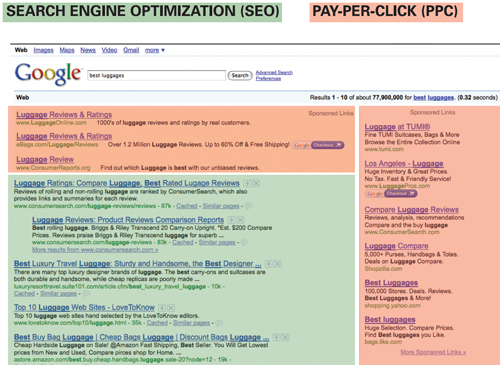It’s a new year, and you know what that means: plenty of 2013 predictions for the digital world. In 2012, the ecommerce industry was successful, and the same predictions are being made for 2013, except with even greater promise. Even in a struggling economy where people are watching their bottom line more closely, ecommerce sites have picked up sales thanks to better optimized sites, personalized shopping experiences and mobile capabilities.
Not only are sales expected to rise in the coming year, but also the experience that consumers have on ecommerce sites is expected to improve as well. It used to be that the biggest challenge for ecommerce SEO was that all sites were the same. They included products gathered into lists, a shopping cart and a checkout page. Many products featured a picture with little to no valuable information on the product, which not only made the shopping experience less optimized, but also it didn’t help in the organic search rankings. Today’s ecommerce sites are improving these factors while weeding out duplicate content and repetitive headlines.As ecommerce SEO becomes a more significant part of ecommerce sites, website owners will be spending 2013 creating fresh, unique product descriptions for their products. That’s right; no more copy and pasting directly from the manufacturer’s site. With stricter guidelines from Google, it’s original content that will get you better ecommerce SEO, so we should expect to see more unique and informative content. Best of all, users have the opportunity to browse, read reviews, make ‘favorites’ lists and watch for deals all from one platform.
Another trend that we can expect to see is more product reviews to help ecommerce SEO. Product reviews are the backbone of any online sale, and in many instances, shoppers will skip right over a product that has poor reviews or no reviews. Since you can’t touch or operate the product, it’s only natural that reviews from other customers would fill that gap. It’s not just any old reviews that consumers are looking for, but high-quality, relevant reviews that can be viewed according to newest, oldest, highest or lowest.
At the end of the day, good ecommerce SEO comes from having a user-friendly, optimized shopping site that consumers want to shop on. What is good for buyers is good for Google and vice versa. With higher standards and more focus on high-quality content, ecommerce sites have no choice but to offer better shopping experiences that bring customers back on a regular basis. An easy-to-follow site with relevant pictures, product reviews and informative descriptions is the new standard for ecommerce SEO and their respective sites.







